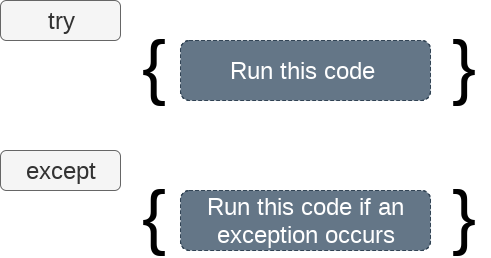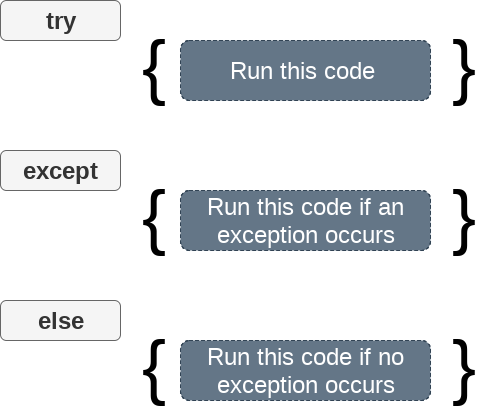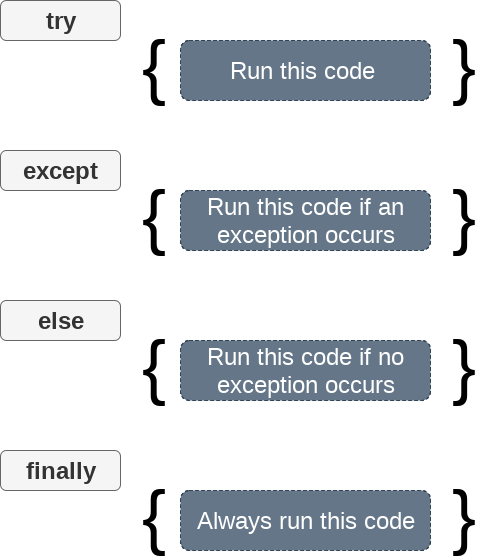-
Python Tutorial
- python-tutorial
- python-features
- python-history
- python-applications
- python-install
- python-example
- python-variables
- python-data-types
- python-keywords
- python-literals
- python-operators
- python-comments
- python-if-else
- python-loops
- python-for-loop
- python-while-loop
- python-break
- python-continue
- python-pass
- python-strings
- python-lists
- python-tuples
- python-list-vs-tuple
- python-sets
- python-dictionary
- python-functions
- python-built-in-functions
- python-lambda-functions
- python-files-i/o
- python-modules
- python-exceptions
- python-date
- python-regex
- python-sending-email
- read-csv-file
- write-csv-file
- read-excel-file
- write-excel-file
- python-assert
- python-list-comprehension
- python-collection-module
- python-math-module
- python-os-module
- python-random-module
- python-statistics-module
- python-sys-module
- python-ides
- python-arrays
- command-line-arguments
- python-magic-method
- python-stack-queue
- pyspark-mllib
- python-decorator
- python-generators
- web-scraping-using-python
- python-json
- python-itertools
- python-multiprocessing
Python OOPs
- python-oops-concepts
- python-object-class
- python-constructors
- python-inheritance
- abstraction-in-python
Python MySQL
- environment-setup
- database-connection
- creating-new-database
- creating-tables
- insert-operation
- read-operation
- update-operation
- join-operation
- performing-transactions
Python MongoDB
Python SQLite
Python Questions
- how-to-install-python-in-windows
- how-to-reverse-a-string-in-python
- how-to-read-csv-file-in-python
- how-to-run-python-program
- how-to-take-input-in-python
- how-to-convert-list-to-string-in-python
- how-to-append-element-in-the-list
- how-to-compare-two-lists-in-python
- how-to-convert-int-to-string-in-python
- how-to-create-a-dictionary-in-python
- how-to-create-a-virtual-environment-in-python
- how-to-declare-a-variable-in-python
- how-to-install-matplotlib-in-python
- how-to-install-opencv-in-python
- how-to-print-in-same-line-in-python
- how-to-read-json-file-in-python
- how-to-read-a-text-file-in-python
- how-to-use-for-loop-in-python
- is-python-scripting-language
- how-long-does-it-take-to-learn-python
- how-to-concatenate-two-strings-in-python
- how-to-connect-database-in-python
- how-to-convert-list-to-dictionary-in-python
- how-to-declare-a-global-variable-in-python
- how-to-reverse-a-number-in-python
- what-is-an-object-in-python
- which-is-the-fastest-implementation-of-python
- how-to-clear-python-shell
- how-to-create-a-dataframes-in-python
- how-to-develop-a-game-in-python
- how-to-install-tkinter-in-python
- how-to-plot-a-graph-in-python
- how-to-print-pattern-in-python
- how-to-remove-an-element-from-a-list-in-python
- how-to-round-number-in-python
- how-to-sort-a-dictionary-in-python
- strong-number-in-python
- how-to-convert-text-to-speech-in-python
- bubble-sort-in-python
- logging-in-python
- insertion-sort-in-python
- binary-search-in-python
- linear-search-in-python
- python-vs-scala
- queue-in-python
- stack-in-python
- heap-sort-in-python
- palindrome-program-in-python
- program-of-cumulative-sum-in-python
- merge-sort-in-python
- python-matrix
- python-unit-testing
- forensics-virtualization
- best-books-to-learn-python
- best-books-to-learn-django
- gcd-of-two-number-in-python
- python-program-to-generate-a-random-string
- how-to-one-hot-encode-sequence-data-in-python
- how-to-write-square-root-in-python
- pointer-in-python
- python-2d-array
- python-memory-management
- python-libraries-for-data-visualization
- how-to-call-a-function-in-python
- git-modules-in-python
- top-python-frameworks-for-gaming
- python-audio-modules
- wikipedia-module-in-python
- python-random-randrange()
- permutation-and-combination-in-python
- getopt-module-in-python
- merge-two-dictionaries-in-python
- multithreading-in-python-3
- static-in-python
- how-to-get-the-current-date-in-python
- argparse-in-python
- python-tqdm-module
- caesar-cipher-in-python
- tokenizer-in-python
- how-to-add-two-lists-in-python
- shallow-copy-and-deep-copy-in-python
Python Tkinter (GUI)
- python-tkinter
- tkinter-button
- tkinter-canvas
- tkinter-checkbutton
- tkinter-entry
- tkinter-frame
- tkinter-label
- tkinter-listbox
- tkinter-menubutton
- tkinter-menu
- tkinter-message
- tkinter-radiobutton
- tkinter-scale
- tkinter-scrollbar
- tkinter-text
- tkinter-toplevel
- tkinter-spinbox
- tkinter-panedwindow
- tkinter-labelframe
- tkinter-messagebox
Python Web Blocker
Python MCQ
Related Tutorials
- numpy-tutorial
- django-tutorial
- flask-tutorial
- pandas-tutorial
- pytorch-tutorial
- pygame-tutorial
- matplotlib-tutorial
- opencv-tutorial
- openpyxl-tutorial
- python-cgi
- python-design-pattern
Python Programs
Python ExceptionAn exception can be defined as an unusual condition in a program resulting in the interruption in the flow of the program. Whenever an exception occurs, the program stops the execution, and thus the further code is not executed. Therefore, an exception is the run-time errors that are unable to handle to Python script. An exception is a Python object that represents an error Python provides a way to handle the exception so that the code can be executed without any interruption. If we do not handle the exception, the interpreter doesn't execute all the code that exists after the exception. Python has many built-in exceptions that enable our program to run without interruption and give the output. These exceptions are given below: Common ExceptionsPython provides the number of built-in exceptions, but here we are describing the common standard exceptions. A list of common exceptions that can be thrown from a standard Python program is given below.
The problem without handling exceptionsAs we have already discussed, the exception is an abnormal condition that halts the execution of the program. Suppose we have two variables a and b, which take the input from the user and perform the division of these values. What if the user entered the zero as the denominator? It will interrupt the program execution and through a ZeroDivision exception. Let's see the following example. ExampleOutput: Enter a:10 Enter b:0 Traceback (most recent call last): File "exception-test.py", line 3, in The above program is syntactically correct, but it through the error because of unusual input. That kind of programming may not be suitable or recommended for the projects because these projects are required uninterrupted execution. That's why an exception-handling plays an essential role in handling these unexpected exceptions. We can handle these exceptions in the following way. Exception handling in pythonThe try-expect statementIf the Python program contains suspicious code that may throw the exception, we must place that code in the try block. The try block must be followed with the except statement, which contains a block of code that will be executed if there is some exception in the try block.  Syntax Consider the following example. Example 1 Output: Enter a:10 Enter b:0 Can't divide with zero We can also use the else statement with the try-except statement in which, we can place the code which will be executed in the scenario if no exception occurs in the try block. The syntax to use the else statement with the try-except statement is given below.  Consider the following program. Example 2 Output: Enter a:10 Enter b:0 can't divide by zero The except statement with no exceptionPython provides the flexibility not to specify the name of exception with the exception statement. Consider the following example. Example The except statement using with exception variableWe can use the exception variable with the except statement. It is used by using the as keyword. this object will return the cause of the exception. Consider the following example: Output: Enter a:10 Enter b:0 can't divide by zero division by zero Points to remember
Example Output: File not found Declaring Multiple ExceptionsThe Python allows us to declare the multiple exceptions with the except clause. Declaring multiple exceptions is useful in the cases where a try block throws multiple exceptions. The syntax is given below. Syntax Consider the following example. Output: Arithmetic Exception The try...finally blockPython provides the optional finally statement, which is used with the try statement. It is executed no matter what exception occurs and used to release the external resource. The finally block provides a guarantee of the execution. We can use the finally block with the try block in which we can pace the necessary code, which must be executed before the try statement throws an exception. The syntax to use the finally block is given below. Syntax  Example Output: file closed Error Raising exceptionsAn exception can be raised forcefully by using the raise clause in Python. It is useful in in that scenario where we need to raise an exception to stop the execution of the program. For example, there is a program that requires 2GB memory for execution, and if the program tries to occupy 2GB of memory, then we can raise an exception to stop the execution of the program. The syntax to use the raise statement is given below. Syntax Points to remember
Example Output: Enter the age:17 The age is not valid Example 2 Raise the exception with message Output: Enter a positive integer: -5 That is a negative number! Example 3 Output: Enter a:10 Enter b:0 The value of b can't be 0 Custom ExceptionThe Python allows us to create our exceptions that can be raised from the program and caught using the except clause. However, we suggest you read this section after visiting the Python object and classes. Consider the following example. Example Output: Received error: 2000 Next TopicPython Date and Time
|